Cathedral san juan bautista puerto rico: Catedral de San Juan Bautista
Cathedral of San Juan Bautista
Wonder
Cathedral of San Juan Bautista / Daderot, Wikimedia Commons, public domain
In short
Sometimes it is claimed that Cathedral of San Juan Bautista is the oldest church building in America, this is not true: it is the second oldest cathedral.
GPS coordinates
18.4657 N 66.1179 W
Name in Spanish
Catedral de San Juan Bautista
Year of construction
1540, the 17th century, 1917
Architecture style
A mix of several styles, including Renaissance and Neo-Classical styles
Branch of Christianity
Catholics
UNESCO World Heritage status
Located in “La Fortaleza and San Juan National Historic Site in Puerto Rico”, 1983, No. 266
Map of the site
Travelers’ Map is loading…
If you see this after your page is loaded completely, leafletJS files are missing.
In detail
Juan Ponce de León
After the defeat of Moors in Granada the experienced Spanish (with Basque roots) warrior Juan Ponce de León decided to look for fortune in faraway lands. He joined the second expedition of Columbus and was one of the first Europeans to see Puerto Rico – then named by local Indians – Boriquen. This happened in 1493.
He joined the second expedition of Columbus and was one of the first Europeans to see Puerto Rico – then named by local Indians – Boriquen. This happened in 1493.
Interior of the Cathedral of San Juan Bautista / Daderot, Wikimedia Commons / CC BY-SA 2.0
More than 10 years later Ponce de León started to explore Puerto Rico and found gold. Soon, in 1509 he was designated as governor of the island. First, in 1508, he established a settlement Caparra, but in 1509 it was moved over to a small island – present-day Old San Juan. Thanks to his ambitions and good relations with the Spanish crown Puerto Rico became the most important Spanish military outpost in the Caribbean and the first ecclesiastical headquarters in the New World.
Juan Ponce de León is buried in Cathedral of San Juan Bautista – he died in 1521 and his remains were first moved to San José Church (also in San Juan), but exhumed and moved to the Cathedral in 1836.
Name swap
When Columbus reached the present day Puerto Rico in 1493, it was named San Juan Bautista (St.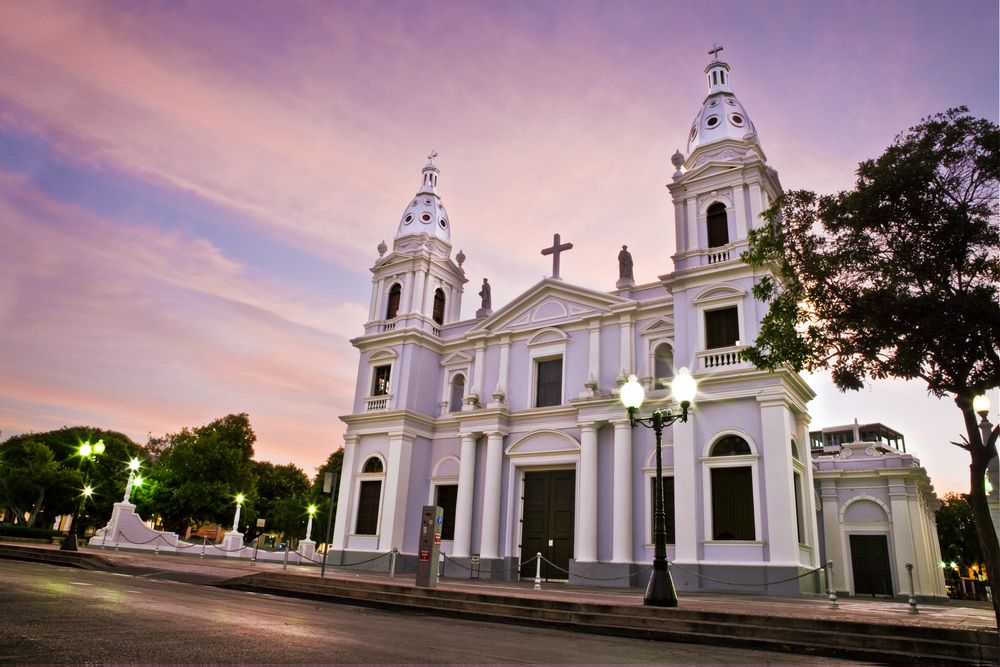 John the Baptist) and the main settlement was named Puerto Rico – “rich port” – because Spaniards received from the local Taíno people gold nuggets here. Soon, in 1521, both names were switched and now we call the whole island Puerto Rico and its capital city – San Juan.
John the Baptist) and the main settlement was named Puerto Rico – “rich port” – because Spaniards received from the local Taíno people gold nuggets here. Soon, in 1521, both names were switched and now we call the whole island Puerto Rico and its capital city – San Juan.
Interior of the Cathedral of San Juan Bautista / Yinghai, Flickr / CC BY 2.0
Second American cathedral
The first bishop in America – Alonso Manso – arrived in Puerto Rico in 1513. In 1521 he directed the construction of the second oldest cathedral in the New World – Cathedral of San Juan Bautista (the oldest is Cathedral of Santa María la Menor in Santo Domingo, Dominican Republic). Bishop had a vision that here will be constructed a temple which would be similar, if not larger than the Cathedral of Seville (which is the third largest church in the world today).
Cathedral was located at the main seagate – guests to the city could visit the church as they set foot on American land after their transatlantic voyage.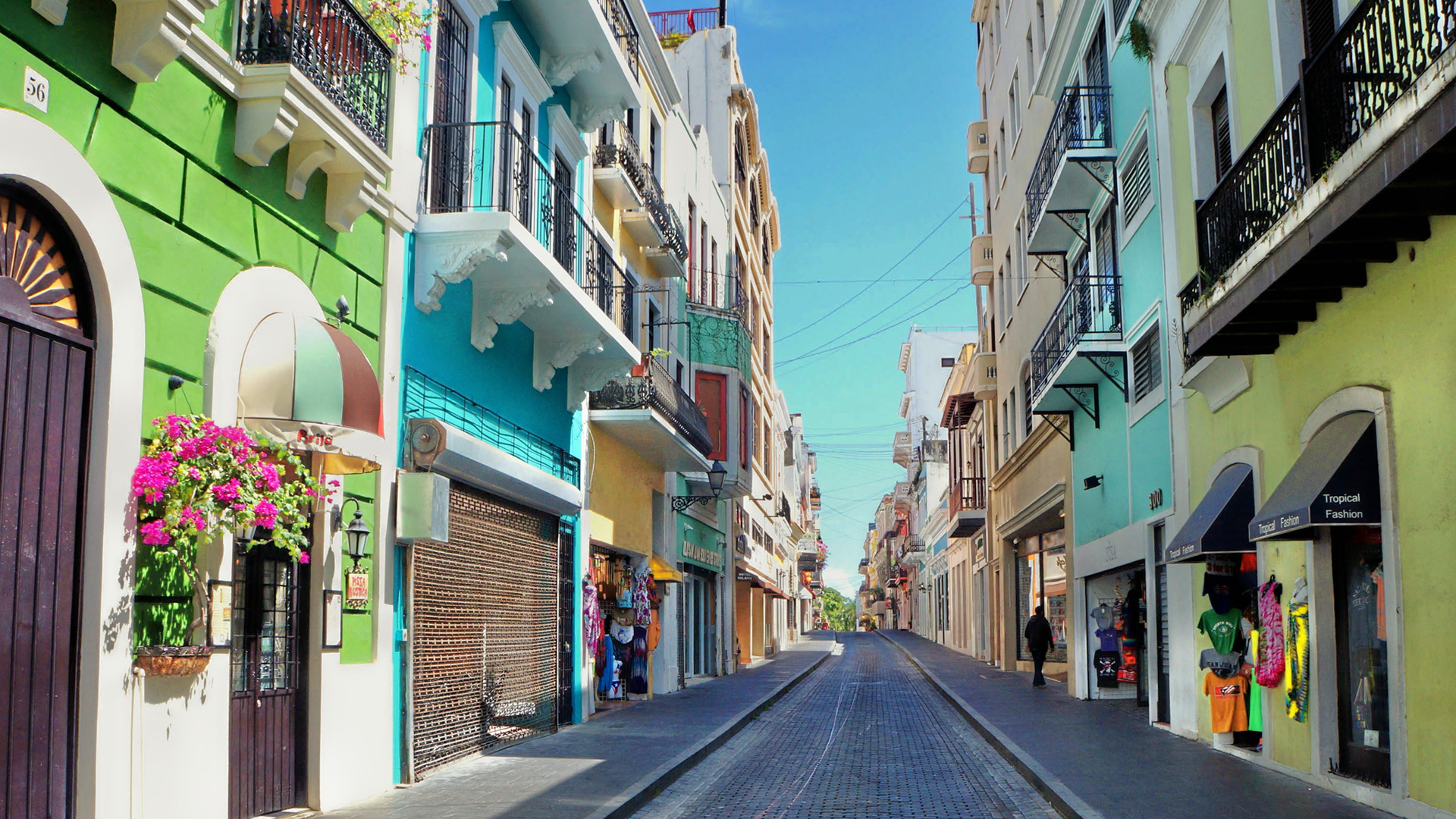
Already on October 4, 1526 the temporary wooden building was destroyed by a hurricane. New one was built from stone before 1529, when the first ordination in America took place in the rebuilt cathedral – Manso consecrated here the bishop of Santo Domingo, Sebastián Ramírez de Arellano.
Grave of Juan Ponce de León / Daderot, Wikimedia Commons, public domain
Once again the church was razed to the ground by a hurricane in 1539. In 1540 it was rebuilt – and again heavily damaged by hurricane in 1615 and Dutch pirates in 1625.
Cemetery next to the church was opened in the late 16th century and was active until the 19th century.
Cathedral was restored and extended in 1917, when to a large extent was created its present day facade.
Today the Cathedral of San Juan Bautista is the greatest religious building in Puerto Rico – visually it is not too impressive but it has great historical importance.
Linked articles
Wonders of Puerto Rico
This large island (with several adjoining smaller islands) is rich both with interesting natural and man-made landmarks. Highlights are San Juan city and its buildings, Taíno heritage, and several unique ecosystems.
Highlights are San Juan city and its buildings, Taíno heritage, and several unique ecosystems.
Churches
Throughout the millennia Christian churches have been the epitome of architecture and arts achievements in Western culture, representing it.
Wonders of Caribbean
The Caribbean is a unique group of islands. These islands are somewhat similar – tropical islands surrounded by the blue Caribbean sea. At the same time, they are very diverse – from enormous Cuba to minuscule Saba, from dry Bonaire to jungle-covered mountains of Trinidad, from the flat Bahamas to mountainous Dominica.
Recommended books
Greater Than a Tourist- San Juan Puerto Rico: 50 Travel Tips from a Local
Greater than a tourist – San Juan, Puerto Rico by M.Colón offers the inside scoop on Puerto Rico. Most travel books tell you how to travel like a tourist. Although there is nothing wrong with that, as part of the Greater Than a Tourist series, this book will give you travel tips from someone who has lived at your next travel destination.
Fodor’s Puerto Rico
Puerto Rico is one of the Caribbean’s most exciting destinations, and with many nonstop flights from major East Coast cities, it’s one of the easiest islands to reach. From vibrant San Juan to laid-back Vieques, all the energy and color of Puerto Rico come to life in this guide.
report this ad
Tagged Wonders
The Cathedral of San Juan Bautista, Puerto Rico – The Second Largest Church in the Americas – Uncover Travel
Uncover Travel
Places to visit in Old San Juan Puerto Rico, Remains of Ponce de Leon, Resting Place of Saint Pius
The Cathedral of San Juan Bautista is named after Puerto Rico’s patron saint, Saint John the Baptist. It is located in the heart of Old San Juan and was built in 1521. It is the second oldest church building in the Americas, however it has been destroyed and undergone restorations more than once. It remains Puerto Rico’s grandest religious building and a site of great historical importance.
It remains Puerto Rico’s grandest religious building and a site of great historical importance.
Then bishop of San Juan, Alonso Manso, was responsible for the construction of the cathedral, which is one of San Juan’s oldest buildings. At the time he had a vision to construct a temple which would be similar to, if not larger than, the Cathedral of Seville, which is the third largest church building in the world today.
A hurricane caused extensive damage to the building in 1526 and a second hurricane, in 1615, removed the roof. Extensive restorations took place in 1917 and the facade was added in the 1800s.
Once the cathedral held many treasures, however it was subject to numerous robberies and pillaging over the years, most notably in 1598 when troops under the Earl of Cumberland attacked the city and looted the church. Today it has two notable and famous requires; the tomb of Juan Ponce de León and the mummified remains of St. Pio.
Juan Ponce de León was born into a noble family in León, Spain.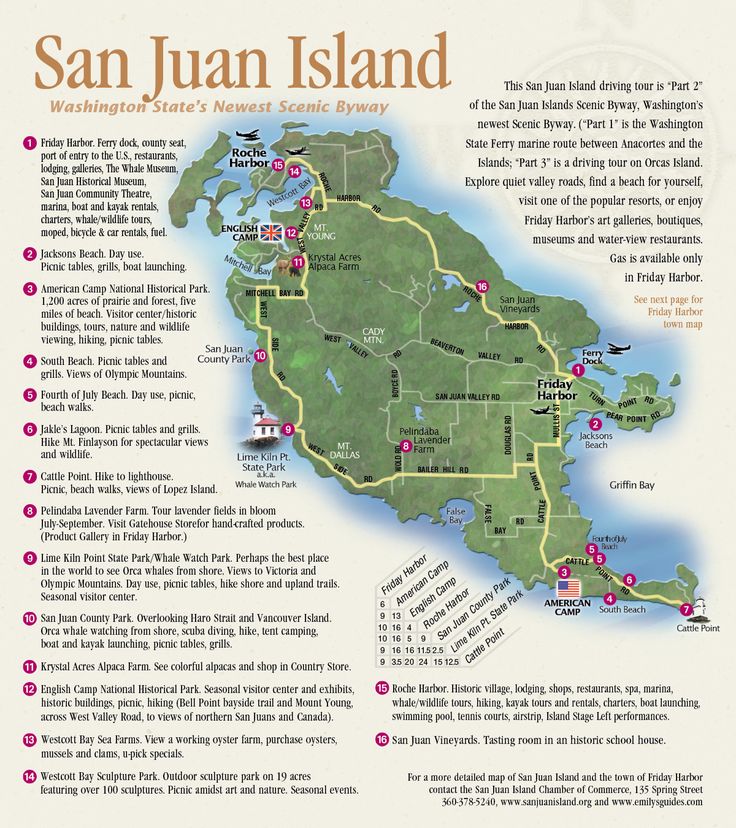 He served as a page in the royal court of Aragon and then became a soldier and fought against the Moors in Granada. It is believed that he accompanied Christopher Columbus on his second voyage to the Indies in 1493. He became the governor of Hispaniola (present day Haiti and Dominican Republic) and then set off to explore San Juan Bautista (as Puerto Rico was then known) after hearing rumours of large amounts of gold on the island. He took 50 soldiers and founded a settlement at Caparra, near what is now San Juan. When he returned to Hispaniola for supplies he was named governor of Puerto Rico.
He served as a page in the royal court of Aragon and then became a soldier and fought against the Moors in Granada. It is believed that he accompanied Christopher Columbus on his second voyage to the Indies in 1493. He became the governor of Hispaniola (present day Haiti and Dominican Republic) and then set off to explore San Juan Bautista (as Puerto Rico was then known) after hearing rumours of large amounts of gold on the island. He took 50 soldiers and founded a settlement at Caparra, near what is now San Juan. When he returned to Hispaniola for supplies he was named governor of Puerto Rico.
In 1521 he was fatally wounded with an arrow and died in Havana, Cuba. His remains were transferred to Puerto Rico, where they were kept in the Iglesia de San José. In the early 1900s the body of Juan Ponce de León was moved to the Cathedral of San Juan Bautista and placed in a marble tomb.
St. Pio (Saint Pius) was one of the first martyrs of the Roman persecutions against Christians in the first century. His remains were brought to Puerto Rico in 1862 when San Juan’s bishop, Mariano Rodríguez de Olmedo, felt it was important to have a real relic of a Christian martyr in the cathedral. The wax-coated mummy is encased in a glass structure inside the cathedral.
His remains were brought to Puerto Rico in 1862 when San Juan’s bishop, Mariano Rodríguez de Olmedo, felt it was important to have a real relic of a Christian martyr in the cathedral. The wax-coated mummy is encased in a glass structure inside the cathedral.
The cathedral is also the resting place of Luis Cardinal Aponte Martinez, the archbishop of San Juan. He served as the archbishop for 34 years and to date he is the only Puerto Rican to have been elevated to a cardinal of the Catholic Church.
INFORMATION
- There is no admission fee but donations are welcome
- Mass is held on Saturdays at 19:00, Sundays at 9:00 and 11:00 and on weekdays at 19:25 and 12:15
- The church is open daily from 8:00 to 16:00
SOURCES
- http://gopuertorico.about.com/od/historicsites/p/Visiting-The-Catedral-De-San-Juan-In-Old-San-Juan.htm
- http://www.elconvento.com/things-to-do/san-juan-cathedral.aspx
- http://www.
 virtualpuertorico.com/san-juan-bautista-cathedral.php
virtualpuertorico.com/san-juan-bautista-cathedral.php - http://www.puertorico.com/sights/san-juan-cathedral/
- http://www.history.com/topics/exploration/juan-ponce-de-leon
- http://www.puertoricodaytrips.com/unusual-osj-sights/
- http://www.findagrave.com/cgi-bin/fg.cgi?page=gr&GRid=88303628
N.B. Information accurate at time of publishing according to AboutTravel.
South Caribbean cruise. From Barbados to St. Thomas. End
The end of the story about the cruise to the South Caribbean Islands.
– Discounted Diamonds
– Iguana Smile
– Three El Morro Flags
Contents:
Part 1 : Celebrity Summit Cruise Ship
All Aboard!
– defatted cockroach feet
– from enomatic to geo-tag
Part 2 : Barbados
– bearded pear
– English re -affected
– Plantation with ivory osm
Part 3, : St. Lucia
– two pythons
– poisonous bread
– tanning in black sands
Part 4, : Antigua
– (not) dangerous stingray
– cathedral in the cathedral
– Hemingway in shorts
Part 5 : Saint Martin
– island for two
– France in the tropics
– keep hats and kids
60002 I. Route: St. Island Thomas – Sapphire Beach.
Route: St. Island Thomas – Sapphire Beach.
As you can see, by the end of the cruise, the routes became shorter, we cram less and less sights into them, while on about. St. Thomas did not reach just one point: the beach. The Caribbean cruise life is like that, it relaxes to the fullest, and this is exactly what I wanted to achieve.
At 8 am Celebrity Summit was already in the picturesque bay of St. Thomas, one of the US Virgin Islands. In total, the USVI kit includes three relatively large islands (including “ours”, including), plus a whole bunch of small ones. nine0003
The USA bought the islands from Denmark for 25 million gold in 1917, a revolutionary year for Russia.
By the way, Russia also showed interest in this region. At the end of the 19th century, the purchase of the island of St. Thomas by Russia was considered, which intended to arrange a naval base on it. “Located on the route of German merchant ships to Panama near Barbados, through which English ships passed, the island was of considerable interest.
The Minister of Marine of Russia, Admiral I. A. Shestakov, ordered to collect all the information about him, but the case did not develop, apparently, both for political and financial reasons “(R. V. Kondratenko” Maritime policy of Russia 80- 19th century).
What if you could? That’s the plot for a book about an alternative reality 🙂
Charlotte Amalie – the main city of St. Thomas, probably the most Americanized of the Caribbean capitals. Trade was originally a priority here, and even now, frankly, this is a paradise for shopaholic tourists. Everything is for sale: from tax-free jewelry and perfumes to monstrous Cuban cigars. Where do you think movie stars buy their diamonds? On Saint Thomas!
But once the island was practically a legal refuge for Caribbean pirates, who traded smuggling completely freely. In honor of Edward Teach aka Blackbeard, with whom we got to know a little closer in the story about the island of Grand Cayman, there is even a small castle named Blackbeard Castle, where you can go on an excursion. Unless, of course, you are embarrassed by the reputation of Tich, known among other things as a “lady-killer”, the comrade killed all his 14 wives. nine0003
Unless, of course, you are embarrassed by the reputation of Tich, known among other things as a “lady-killer”, the comrade killed all his 14 wives. nine0003
Loading into a taxi right at the port, we told the driver the name of just one place: Sapphire Beach. It is located on the opposite side of the island, so the price was not too humane, $10 per person.
This beach was not a spontaneous choice, some preparations were nevertheless made, several booklets were read and appropriate conclusions were made. Based on the fact that on some days almost 11 (eleven!) cruise ships can accumulate in the harbor of St. Thomas, and most of the passengers do not leave the capital and its surrounding beaches, we assumed that we should get out of here. And the further, the better. And quieter. nine0003
And yes. I don’t know where the cruise crowds settled that day, but Sapphire beach had a minimum of people, it was cozy, clean, and incredibly beautiful. A very worthy place, with coccoloba trees (aka sea grapes) growing right in the sand, beautiful water, coral reefs to the left and right, and overlooking other islets.
Snorkeling is wonderful, especially a lot of parrot fish that climbed on their hands and looked into the eyes like a puppy.
Among the unusual animals we saw a chiton – a shellfish. Living in the tidal zone of the seas and oceans under the blows of the sea surf, chitons are reliably protected by a shell consisting of 8 plates. If the chiton is torn off the stone, which is not easy, it immediately curls up into a ball, like an armadillo.
I remember the story of how once walking in the park, we ran into a large armadillo (and they are quite common in the Texas region), which did not notice us until the last, almost burying its nose in boots. And when he noticed, he hid. Like this:
There was no mention of “curl up into a ball when danger approaches”. Well, they did not touch the chiton. So he remained lying like a marble roll on a dish 🙂
Periodically, iguanas appeared on the beach. Ordinary black, with a smiling muzzle.
They slowly stepped across the sand in the hope of finding something to eat, especially next to the sunbeds. Someone drove them away like sparrows, someone fed them. The husband donated a large cabbage leaf from his hamburger to the iguana – she ate it in a jiffy, and went on, ungrateful. nine0003
By the way, the prices for drinks here were not small, but not exorbitant: beer $4, cocktails $8, flatbread with meat or fish – $8.
Our child practically did not get out of the water, so we spent six hours in a completely relaxed mode.
At the exit we again took a taxi. Cars on the island are almost all left-hand drive, despite the fact that they drive on the left side. Here are the American islands. There was still time before the ship left, so the taxi driver offered to make a short detour for the sake of beauty. I took him to the mountain, from where a pleasant view of the harbor really opened, and our ship was visible. nine0003
We spent the final cruise dinner together at a large table in the main banquet hall. Then we drank wine for a long time on the balcony in the cabin of our friends, admiring the evening sea and enjoying the excellent weather.
Then we drank wine for a long time on the balcony in the cabin of our friends, admiring the evening sea and enjoying the excellent weather.
The next morning, Celebrity Summit was returning to Puerto Rico, so the suitcases were asked to be packed the day before and left at the door until 11pm. This is a common practice on cruises to ensure that people do not push or interfere with each other when disembarking.
They also let me know in which section to wait for disembarkation in the morning (usually this is some bar, concert hall, etc.) In principle, everything is quite organized and worked out. nine0003
St. Thomas –
Try : tuna with crust, snapper (snapper), Creole shrimp, guacamole, yucca chips.
Buy : jewelry.
Departure day . Disembarking the ship without delay according to the instructions issued, we spent some time in the queue for the security, and finally, having received the luggage, we were left to our own devices.
The flight to Houston left at 4 pm, and we were unloaded early in the morning, so we could still walk around San Juan. But not with suitcases. And here the advice came in handy, long read on the vastness of the American Internet. nine0003
Luggage could be temporarily left at the Barrachina cafe for a nominal fee ($2 per suitcase). A very convenient service. Walk 500 meters from the ship, or 6 minutes. I don’t know why other cafes or restaurants don’t do this.
Already light, we went to see the main local attraction – the fortress of El Morro. My husband and I have already been to Puerto Rico in the pre-childhood period, when we had a good ride around the island, reaching even Arecibo (story >>). But the rest of the team was here for the first time. nine0003
On his second voyage to the West Indies, Christopher Columbus was the first European to set foot on Puerto Rico, a small rectangular island in the very northeast of the Caribbean.
The local Indians called their island Boriken, but Columbus named it San Juan Batista (“Saint John the Baptist”). Soon, the city of Puerto Rico appears on the island (that is, “rich harbor”). Subsequently, cartographers mixed up the names, and the name San Juan was assigned to the city, and Puerto Rico was assigned to the island. nine0003
It was to protect San Juan that the powerful, 6-level fort of El Morro was erected, the construction of which began in 1539. Over the next 300+ years, Spain more and more hangs El Morro with different “chips”: either the thickness of the walls is increased from two meters to five and a half, or in general, it was decided to enclose the entire San Juan with a huge wall, the construction of which took 48 years.
All this – huge city walls, fort San Cristobal built along the way to repel ground attacks, and, finally, armored from all sides, El Morro defended San Juan until the very end 19th century.
But in 1898, the Spanish-American War broke out, ending Spain’s dominance in Caribbean waters.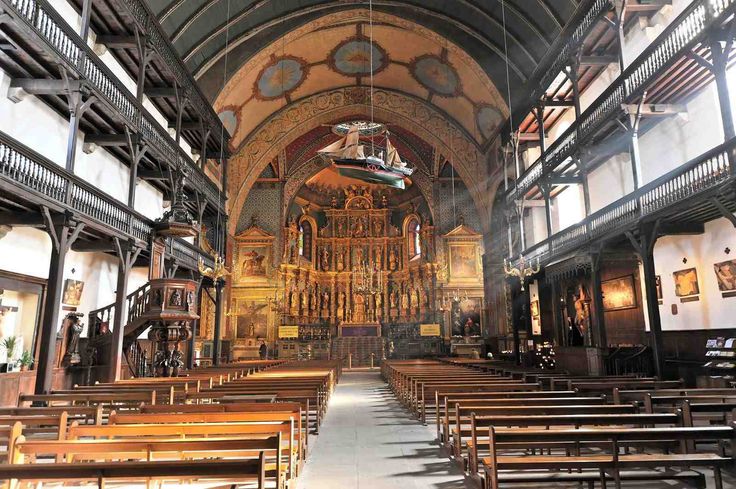
During the fighting, the United States seized Cuba, Puerto Rico, and the Philippines, which belonged to Spain since the 16th century. According to the Peace of Paris, which ended the war, Spain renounced the rights to all these colonies, which were declared “free states”, but found themselves, however, under one form or another of US control.
So, the beautiful El Morro turned into the American “Fort Brook”, and the green lawn in front of it was planted with palm trees and turned into a golf course. nine0003
Today, the flags of Puerto Rico, the United States and the Burgundian Cross, once used by the Spaniards, fly over the fort.
The struggle for the status of Puerto Rico continues. A certain part of the islanders is striving to turn the country into a US state.
The camp of supporters of independence is small and fragmented. Among them is the Communist Party, revived in 2010 (together with the political school named after Vladimir Lenin), whose flag repeats the design of the national flag, but, paradoxically, the red color has been eliminated from it. It is the only Communist Party flag in the world that does not have red on it. nine0003
It is the only Communist Party flag in the world that does not have red on it. nine0003
The majority of Puerto Ricans, participating in periodic referendums, support the idea of maintaining the current status of the country.
Entrance to El Morro is $3 (children under 15 free). In the very center is the main square of the fortress, where parades and celebrations take place.
A well was dug here, which provided all the defenders of the fort with rain drinking water. The premises around were used as barracks, powder magazines, prison cells and firing points. nine0003
Going down the stairs, you can get to the St. Barbara Battery – the most powerful cannon battery of the entire fort.
Most of the cannons here are located almost at sea level in order to be able to fire on the bottoms of ships that come too close to the fortress. True, the battery participated in hostilities only twice. The rest of the time it was teachings, teachings, teachings.
And perhaps the most romantic element of the fortress – garitas . The guardhouses “garitas” have become a national symbol. Their images can be found in any tourist catalogue, on postcards, on license plates and various souvenirs. And modern young Puerto Ricans love to kiss there 🙂
And speaking of toilets. No, but what? Enough history for us, it’s time for the essentials. There are two of them, and from the windows of both there are simply crazy views of the Atlantic. So do not rush to call the police when you see a joyful person with a camera coming out of the toilet. This is not a psycho and not a pervert. He just liked the landscape 😉
After walking around the streets of old San Juan for about an hour, we took our suitcases from the cafe and took a taxi to the airport. As is usually the case on the islands, agri-control is added to the standard checks before boarding the plane (yes, it’s better to eat that apple from the local market in advance!), Which quite significantly slows down the whole process. It is worth considering this and arriving a little early.
It is worth considering this and arriving a little early.
After 4 and a half hours we were back on Texas soil after 7 days of rocking the seas – the waves. In general, it turned out to be quite a pleasant and colorful trip (I don’t dare to call cruises trips). nine0003
As always, it was annoying to have to constantly look at the clock, as the ship leaves at 5-6 pm depending on the island. But if you perceive such short-term landings as introductory, allowing you to evaluate – you want to spend more time on this island later, or it is better to choose another one, then this somehow allows you to put up with reality.
In any case, I managed to relax, and thanks for that.
That’s all for me! Thanks to everyone who watched, wrote, and read. nine0003
Katerina Andreeva.
www.andreev.org
| Dad at the turn SECOND AND THIRD MILLENNIUM Texts prepared by: Fr. about. Blazhei Mikhalevsky Photographer: Arturo Mari VATICAN PRINTING HOUSE 2001 Authors: o. Andrzej Schensny about. Blazhei Mikhalevsky Photographer: Arturo Mari Translation into Kazakh – Doctor of Philology, Professor Zhakupov Zhantas Altaevich Editorial Board: Medynskaya Irina Bovsunovsky Yan Yurchik Kamila Myakotin Alexander 2001 TIPOGRAFIA VATICANA Direzione Tel. 69883012-85037-Fax 69884570 Amministrazioni Tel. 698.83344 You are Peter, and on this rock I will build My Church. Matt. 16, 18 While they were eating, Jesus said to Simon Peter: Simon of Jonas! do you love me more than they do? Peter says to Him: Yes, Lord! You know I love you. Jesus says to him, feed my lambs. Another time he says to him: Simon Jonin! do you love me? Peter says to Him: Yes, Lord! You know I love you. In. 21, 15-17 We thank God for the publication of this photo album, with which the authors express their belonging to the Church of Christ and their love for the Successor of Peter – John Paul II – teacher of the faith, apostle of the Gospel, father and brother to all people. Christ entrusted him to shepherd His flock in our time, at the turn of two centuries, introducing it into the new millennium. About a billion inhabitants of our planet are Catholics. We see in the Pope the Vicar of Christ, whose ministry, filled with love, reaches every person. He addresses us: “Understand, whoever you are, God loves you! Remember, the gospel is a message of joy! God!” nine0003 Karol Jozef Wojtyła (that was the name of the Pope before his Pontificate 1 ) spends a lot of time in prayer; friends believe that she is the main source of his physical and mental strength. The Pope’s mind is open to new ideas and concepts from philosophy to science. John Paul II holds seminars every two years, which bring together the most prominent scientists in the world. The life experience of the Pope has found expression in his rich poetic and dramatic work, he is a recognized philosopher and poet. The pontificate of John Paul II is one of the longest and most significant in the history of the Church. It is marked by a large number of published works and constant travels, during which the Holy Father made pastoral visits to almost all countries where the Church exists. John Paul II is a man of extraordinary kindness, which allows him to easily establish contacts with millions of people. John Paul II conducts an active diplomatic activity on all problems that oppress humanity. The Pope of Rome receives visiting presidents, ambassadors and other political figures. He reacts to international events with great erudition and knowledge of the problems of peace and politics, deepened during numerous trips to the countries of five continents. The Pope – from the East – is especially well equipped to conduct a dialogue with brothers from the Orthodox Churches. Diplomatic contacts, constant appeals in epistles, Apostolic letters and friendly gestures promoted a new trust and close contacts that had not been known for centuries. Patriarch Demetrius of Constantinople visited Rome on December 1987 years old. In June 1995, his successor, Patriarch Bartholomew I of Constantinople, also visited Rome, at the same time a joint statement was signed. Six months later, the Catholicos of Armenia Karekin also arrived in Rome to sign a joint statement. The Pope has made great efforts to improve relations with the Protestant Churches. Delegations of Lutherans visited Rome, including bishops from Sweden. In 1981 the Anglican Archbishop of Canterbury, Robert Runcie, visited the Pope, and in 1989 a joint declaration was signed. In April 1986 contacts were made with non-Christian religions. John Paul II continues conciliar innovations, thereby confirming the significance of the Second Vatican Council, in whose meetings he himself took a prominent part. (Karol Wojtyla was one of the authors of the Declaration on Religious Freedom, and also acted as a defender of freedoms and human rights, his dignity and social justice in all manifestations). In his proclamation, John Paul II warns: “The culture of death” is trying to invade our striving for life and reach its peak. There are people who refuse the light of life, choosing “the fruitless deeds of darkness.” Their fruits are injustice, discrimination, exploitation, deceit, violence. Twenty centuries have already passed, but the Successor of Peter “is still one of those who “was a witness of the resurrection”, he knows that “the same Jesus was taken up to heaven” (cf. Acts 1, 22) and is ready bear witness to this with your own life – in word, but above all in deed” ( Vittorio Messori ). Despite his age and state of health, the Holy Father continues to serve Christ and the Church. Concluding the Jubilee year of Christianity, together with the bishops of the whole world, on October 8, 2000, Pope John Paul II performed the Act of consecration of the Blessed Virgin Mary to the Church and the whole world for the third millennium, which ends with the words: (…) O Mother, You know the sufferings and hopes of the Church and the world, help your children in everyday trials, to whom life is so generous, and create, so that – thanks to the joint efforts of all people – the darkness did not overcome the light. To you, O dawn of salvation, we dedicate our path in the new millennium, So that under Your leadership all people will find Christ – Light of the world and the only Savior, Who reigns with the Father and the Holy Spirit. Amen. p. Ekaterina Etzel SJE CHRONOLOGICAL LIST OF PAP AND ANTIPAP antipopes in italics St. Peter (33 – 64) St. Sixtus III (432 – 440) St. Lyn (67 – 76) St. Leo (440 – 461) St. Cletus (Anaklet) (76 – 88) St. Hilarius (461 – 468) St. Clement I (88 – 97) St. Simplicius (468 – 483) St. Evariste (97 – 105) St. Felix III (II) (483 – 492) St. Alexander I (105 -115) St. Gelasius I (492 – 496) St. Sixtus I (115 – 125) St. Anastasius II (496 – 498) St. Telesphorus (125 – 136) St. Symmachus (498 – 514) St. Hygin (136 – 140) Lawrence (498 – 499; 501 – 506) St. St. Aniket (155 – 166) St. John I (523 – 526) St. Soter (166 – 175) St. Felix IV (526-530) St. Eleutherius (175-189) Dioscurus (530) St. Zepherin (199 – 217) John II (533 – 535) St. Calixtus I (217 – 222) St. Agapetus I (535 – 536) Hippolyte (217 – 235) St. Silverius (536 – 537) St. Urban I (222 – 230) Vigilius (537 – 555) St. Pontian (230 – 235) Pelagius I (556 – 561) St. Anter (235 – 236) John III (561 – 574) St. Fabian (236 – 250) Benedict I (575 – 579) St. Cornelius (251 – 253) Pelagius II (579 – 590) Novatian (251 – 258) St. Gregory I (590 – 604) St. Lucius I (253 – 254) Sabinian (604 – 606) St. Stenfan I (254 – 257) Boniface III (607) St. Sixtus II (257 – 258) St. Boniface IV (608 – 615) St. St. Felix I (269 – 274) Boniface V (619 – 625) St. Eutychius (275 – 283) Honorius I (625 – 638) St. Guy (283 – 296) Severin (640) St. Marcellinus (296 – 304) John IV (640 – 642) St. Marcellus I (308 – 309) Theodore I (642 – 649) St. Eusebius (309) St. Martin I (649 – 655) St. Miltiades (311 – 314) St. Eugene I (654 – 657) St. Sylvester I (314 – 335) St. Vitalian (657 – 672) St. Mark (336) Adeodates II (672 – 676) St. Julius I (337 – 352) Dono (676 – 678) Liberius (352 – 366) St. Agathon (678 – 671) Felix (355 – 365) St. Leo II (682 – 683) St. Damas I (366 – 384) St. Benedict II (684 – 685) Ursinus (366-367) John V (685 – 686) St. Siricius (384 – 399) Conon (686 – 687) St. Anastasius I (399 – 401) Theodore (687) St. St. Zosima (417 – 418) St. Sergius I (687 – 701) Eulalius (418 – 419) John VI (701 – 705) St. Boniface (418 – 422) John VII (705 – 707) St. Celestine I (422 – 432) Sisinnius (708) Constantine (708 – 715) Boniface VII (974; 984 – 985) St. Gregory II (715 – 731) Benedict VII (974 – 983) St. Gregory III (731 – 741) John XIV (983 – 984) St. Zacharias (741-752) John XV (985 – 996) Stephen II IV (III) (752 – 757) Gregory V (996 – 999) St. Paul I (757 – 767) John XVI (997 – 998) Constantine (767 – 768) Sylvester II (999 – 1003) Philip (768) John XVII (1003) Stephen III (IV) (768 – 772) John XVIII (1004 – 1009) Adrian I (772 – 795) Sergius IV (1009 – 1012) St. Leo III (795 – 816) Benedict VIII (1012 – 1024) Stephen IV (V) (816 – 817) Gregory VI (1012) St. Eugene II (824 – 827) Benedict IX (1032 – 1044; 1045; Valentine (827) 1047-1048) Gregory IV (827 – 844) Sylvester III (1045) John (844) Gregory VI (1045 – 1046) Sergius II (844-847) Clement II (1046 – 1047) St. Leo IV (847 – 855) Damasus II (1048) Benedict III (855 – 858) St. Leo IX (1049 – 1054) Anastasy (855) Victor II (1055 -1057) St. Nicholas I (858 – 867) Stephen IX (X) (1057 – 1058) Adrian II (867 – 872) Benedict X (1058 – 1059) John VIII (872 – 882) Nicholas II (1059 – 1061) Marin I (882 – 884) Alexander II (1061 – 1073) St. Adrian III (884 – 885) Honorius (II) (1061 – 1064) nine0002 Stephen V (VI) (885 – 891) St. Gregory VII (1073 – 1085) Formosa (891 – 896) Clement (III) (1080; 1084 – 1100) Boniface VI (896) Victor III (1086 – 1087) Stephen VI (896 – 897) Urban II (1088 – 1099) Roman (897) Paschal II (1099-1118) Theodore II (897) Theodore (1100 – 1101) John IX (898 – 900) Albert (1101) Benedict IV (900 – 903) Sylvester IV (1105 – 1111) Leo V (903) Gelasius II (1118 – 1119) Christopher (903 – 904) Gregory VIII (1118 – 1121) Sergius III (904 – 911) Calixtus II (1119 – 1124) Anastasius III (911 – 913) Honorius IV (1124 – 1130) Landon (913 – 914) Celestine II (1124) John X (914 – 928) Innocent II (1130 – 1143) Leo VI (928) Anaclet II (1130 – 1138) Stephen VII (VIII) (928 – 931) Victor IV (1138) John XI (931 – 935) Celestine II (1143 – 1144) Leo VII (936 – 939) Lucius II (1144 – 1145) Stephen VIII (IX) (939 – 942) Eugene III (1145 – 1153) Marin II (942 – 946) Anastasius IV (1153 – 1154) Agapet II (946 – 955) Adrian IV (1154 – 1159) John XII (955 – 964) Alexander III (1159 – 1181) Leo VIII (963 – 965) Victor IV (1159 – 1164) Benedict V (964 – 966) Paschal III (1164 – 1168) John XIII (965 – 972) Kallikt ( III) (1168 – 1178) Benedict VI (973 – 974) Innocent (III) (1179 – 1180) Lucius III (1181 – 1185) Pius III (1503) Urban III (1185 – 1187) Julius II (1503 – 1513) Gregory VIII (1187) Leo X (1513 – 1521) Clement III (1187 – 1191) Adrian VI (1522 – 1523) Celestine III (1191 – 1198) Clement VII (1523 – 1534) Innocent III (1198 – 1216) Paul III (1434 – 1549) Honorius III (1216 – 1227) Julius III (1550 – 1555) Gregory IX (1227 – 1241) Marcellus II (1555) Celestine IV (1241) Paul IV (1555 – 1559) Innocent IV (1243 – 1254) Pius IV (1560 – 1565) Alexander IV (1254 – 1261) St. Urban IV (1261 – 1264) Gregory XIII (1572 – 1585) Clement IV (1265 – 1268) Sixtus V (1585 – 1590) St. Gregory X (1271 – 1276) Urban VII (1590) Innocent V (1276) Gregory XIV (1590 – 1591) Adriano V (1276) Innocent IX (1591) John XXI (1276 – 1277) Clement VIII (1592 – 1605) Nicholas III (1277 – 1280) Leo XI (1605) Martin IV (1281 – 1285) Paul V (1605 – 1621) Honorius IV (1285 – 1287) Gregory XV (1621 – 1623) Nicholas IV (1288 – 1292) Urban VIII (1623 – 1644) St. Celestine V (1294) Innocent X (1644 – 1655) Boniface VIII (1295 – 1303) Alexander VII (1655 – 1667) Benedict XI (1303 – 1304) Clement IX (1667 – 1669) Clement V (1305 – 1314) Clement X (1670 – 1676) John XXII (1316 – 1334) Innocent XI (1676 – 1689) Nicholas (V) (1328 – 1330) Alexander VIII (1689 – 1691) Benedict XII (1334 – 1342) Innocent XII (1691 – 1700) Clement VI (1342 – 1352) Clement XI (1700 – 1721) Innocent VI (1352 – 1362) Innocent XIII (1721 – 1724) Urban V (1362 – 1370) Benedict XIII (1724 – 1730) Gregory XI (1370 – 1378) Clement XII (1730 – 1740) Urban VI (1378 – 1389) Benedict XIV (1740 – 1758) Clement VII (1378 – 1394) Clement XIII (1758 – 1769) Boniface IX (1389 – 1404) Clement XIV (1769 – 1774) Benedict XIII (1394 – 1417) Pius VI (1775 – 1799) Innocent VII (1404 – 1406) Pius VII (1800 – 1823) Gregory XII (1406 – 1415) Leo XII (1823 – 1829) Alexander V (1409 – 1410) Pius VIII (1829 – 1830) John (XXIII) (1410 – 1415) Gregory XVI (1834 – 1846) Martin V (1417 – 1431) Pius IX (1846 – 1878) Clement (VIII) (1423 – 1429) Leo XIII (1878 – 1903) Benedict (XIV) (1425 -?) St. Eugene IV (1431 – 1447) Benedict XV (1914 – 1922) Felix V (1439 – 1449) Pius XI (1922 – 1939) Nicholas V (1447 – 1455) Pius XII (1939 – 1958) Calixtus III (1455 – 1458) John XXIII (1958 – 1963) Pius II (1458 – 1464) Paul VI (1963 – 1978) Paul II (1464 – 1471) John Paul I (1978) Sixtus IV (1471 – 1484) John Paul II (1978 – ) Innocent VIII (1484 – 1492) Alexander VI (1492 – 1503) BIOGRAPHY OF KAROL WOYTYLA (until he is elected pope) Father, Karol Wojtyla, son of Matthew and Anna, was born on 07/18/1879 in Lipnik near the town of Bielsko-Biala. Since 1900, an officer in the Austrian and Polish armies. Mother, Emilia Kaczorowska, daughter of Felix and Anna, was born on 03/26/1884 in Krakow.
20.06. Baptized by army priest Francis Jacques.
institute, having become infected in the hospital, which was a great shock to my
1934 – 38. Theater performances in Wadowice. 1935 September. Takes part in military exercises in Germanowice. 14.12. Admitted to the society of worshipers of the Mother of God, later he will become chairman of this society. 1938 May. He receives the sacrament of chrismation, after which he makes a pilgrimage to Częstochowa. 14.05. With the best grades, he receives a matriculation certificate. 22.06 Submits documents to the Faculty of Philosophy (Polish philology course), at the Jagiellonian University in Krakow. In the summer of the same year, he moves with his father to Krakow (lives with relatives his mother on the street. In the first year of study, he joins the experimental theater troupe “Studio 38” created by Tadeusz Kudlinski. 1939 6.02. Joins the Religious Fraternity of Students of the Jagiellonian University (Eucharistic section). 1.09. The Second World War begins. 2.11. Begins studies in the 2nd year of literature and philosophy. Professors of the Jagielonian University strive to conduct regular classes, but, unfortunately, collected by the Nazis for a meeting, some were shot, while others were taken out – zen to the camps.
spirituality, which introduces him to the spirituality of John of the Cross and St. Teresa of Avila. Participates in the underground theater directed by Tadeusz Kudlinsky. 1.11. In order to earn a living and avoid deportation, he works in a stone lomnies in Zakrzyowka. visited Jews and kept in contact with them, one of them was Anna Weber. nine0003 One day saves Edith Cheyre, who miraculously escaped from the camp in Auschwitz, carrying her in his arms to the train. 1941 18.02. His father dies. In August, he takes Mieczysław’s family into his home. Kotlyarchika. 1.09. Premiere of Juliusz Słowacki’s “King of the Spirit”, followed by the following. 1942 Spring. Transferred to work at the chemical factory Solvay. Oct. Begins underground studies at the seminary under the tutelage of the archbishop Sapehi. 1943 Mar. Plays the title role in Juliusz Słowacki’s “Samuel Sborovskiy. In 1943-44, he studies in the 2nd year of theology, while working in Solvay. 1944 29.02. – 12.03. After being hit by a truck, he is being treated in the hospital. August. Archbishop Adam Sapeha accepts all seminarians for permanent residence in his residence until the end of the war. Leaves work. nine0003 9.09. Receives a tonsura (one of the rites that the candidate takes ed. ordination).
1945 9.04. Elected Deputy Chairman of the student organization “Brotherly 1945-1946. 4th course of Theology.
1946 13.10. Subdeaconate.
01. not related to the decision of the archbishop to send him to study for nine0002 writing a doctoral dissertation. 02.11. Primitia. The first independent mass was celebrated in the crypt of St. Leonard on the Wawel in Krakow.
15.11. – 12 Lives with the Pallotin fathers on the street. Pettinari. End of December. Together with the priest Staroveysky, he lives in the Pontifical Belgian College on Quirinal Street. nine0003 1947 3.07. Defends the theological lecinciant. Summer. Together with the priest Staroveisky travels around France, Belgium and Holland. 1948 14-19.06. Defends his thesis “The doctrine of faith according to the teachings of St. Cross”, after which he leaves Rome.
24.10. Doctoral dissertation formally accepted at the theological department 16.12. Receives a master’s degree in theology for his studies in 1942-46. in Jagielons- com university. 1949 7.08. Transferred to Krakow to work as a vicar in the parish of St. Florian. Simultaneously performs the work of a research assistant and is a shepherd 90,002 youth who call him wuik (uncle). At this time he refuses offered him a post at the Jagiellonian University. nine0002 1950 Publishes poetry under a pseudonym in one of the Catholic weeklies Andrzej Yaven. 1951 3.07 . Cardinal Adam Sapeha dies, who recommends Wojtyła temporarily give up pastoral work, and engage in exclusive but scientific activity. Baziak in September also confirms this decision. 1953 1-3.12. Reaches the next scientific level (in Poland it is called habilitation), defending the work “On the possibility of building a Christian ethics based on the system of Max Schiller. Accepts the position of professor public ethics at the Krakow Seminary. Simultaneously with October leads Catholic Public Ethics Course for 4th Year Theology Students at the Jagiellonian University.
Faculty opens at the Catholic University in Lublin, where Wojtyła is a professor.
Catholic University, which he headed before being elected Pope. |
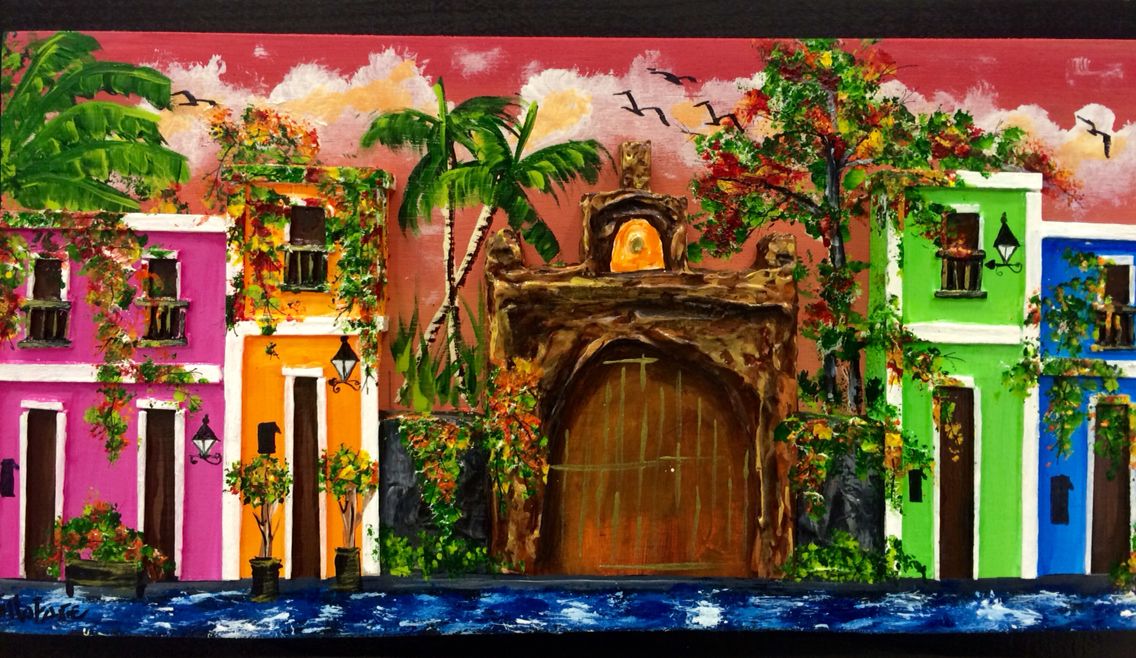 virtualpuertorico.com/san-juan-bautista-cathedral.php
virtualpuertorico.com/san-juan-bautista-cathedral.php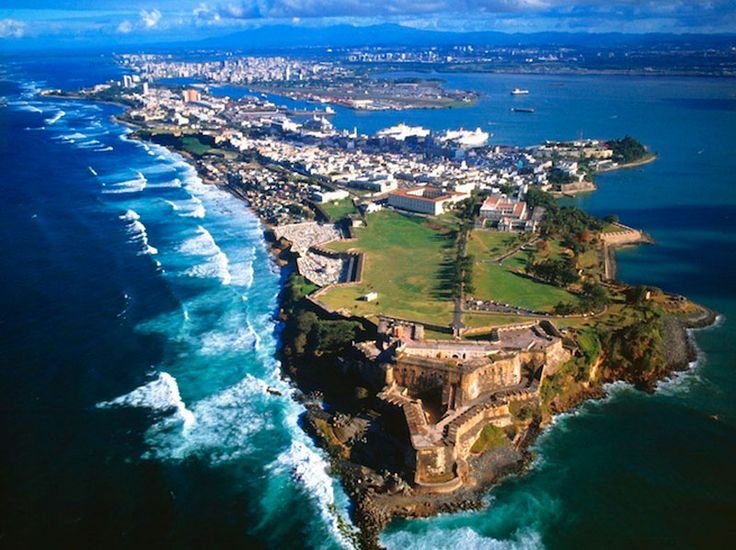 Andrzej Schensny
Andrzej Schensny Jesus says to him, feed my lambs. Says to him for the third time: Simon Jonin! do you love me? Peter was grieved that for the third time he asked him: “Do you love Me?” and said to Him: Lord! You know everything; You know I love you. Jesus says feed my sheep.
Jesus says to him, feed my lambs. Says to him for the third time: Simon Jonin! do you love me? Peter was grieved that for the third time he asked him: “Do you love Me?” and said to Him: Lord! You know everything; You know I love you. Jesus says feed my sheep. John Paul II leads a very intense lifestyle. He uses every opportunity to work from early morning until almost midnight. Dad also knows how to actively relax. Throughout his life, he was involved in various sports: skiing, kayaking. Favorite type of recreation is hiking mountain walks in the fresh air.
John Paul II leads a very intense lifestyle. He uses every opportunity to work from early morning until almost midnight. Dad also knows how to actively relax. Throughout his life, he was involved in various sports: skiing, kayaking. Favorite type of recreation is hiking mountain walks in the fresh air. The smiling face of the Pope is the most famous face on earth. nine0003
The smiling face of the Pope is the most famous face on earth. nine0003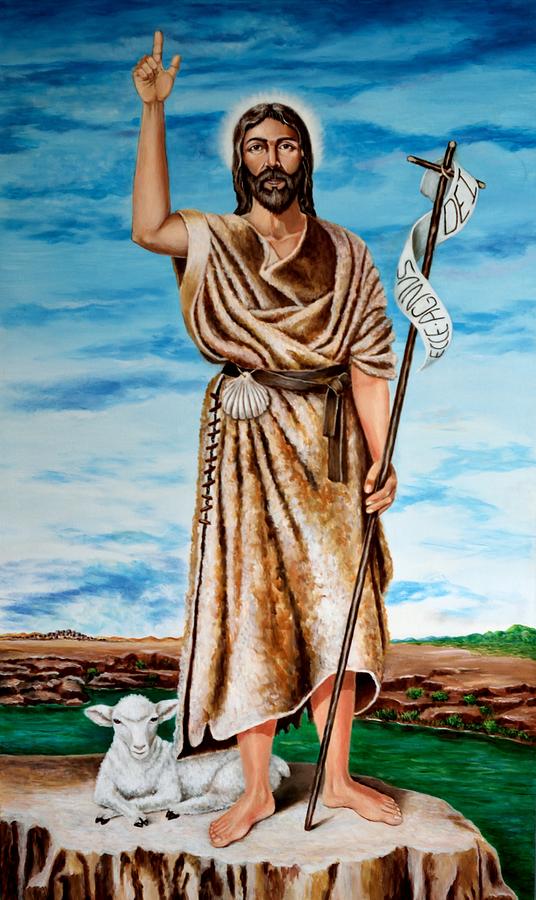
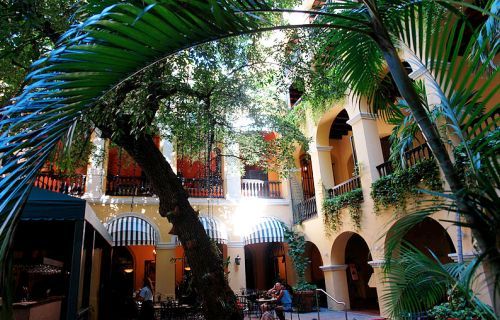 ” The Pope allows no objection to the undeniable moral teachings of the Church, speaking out against abortion, artificial insemination, euthanasia, clerical marriages, ordination of women, divorce and homosexuality.
” The Pope allows no objection to the undeniable moral teachings of the Church, speaking out against abortion, artificial insemination, euthanasia, clerical marriages, ordination of women, divorce and homosexuality.
 Pius I (140 -155) St. Hormied (514 – 523)
Pius I (140 -155) St. Hormied (514 – 523) Dionysius (259 – 268) St. Adeodates I (Deusdedit) (615 – 618)
Dionysius (259 – 268) St. Adeodates I (Deusdedit) (615 – 618)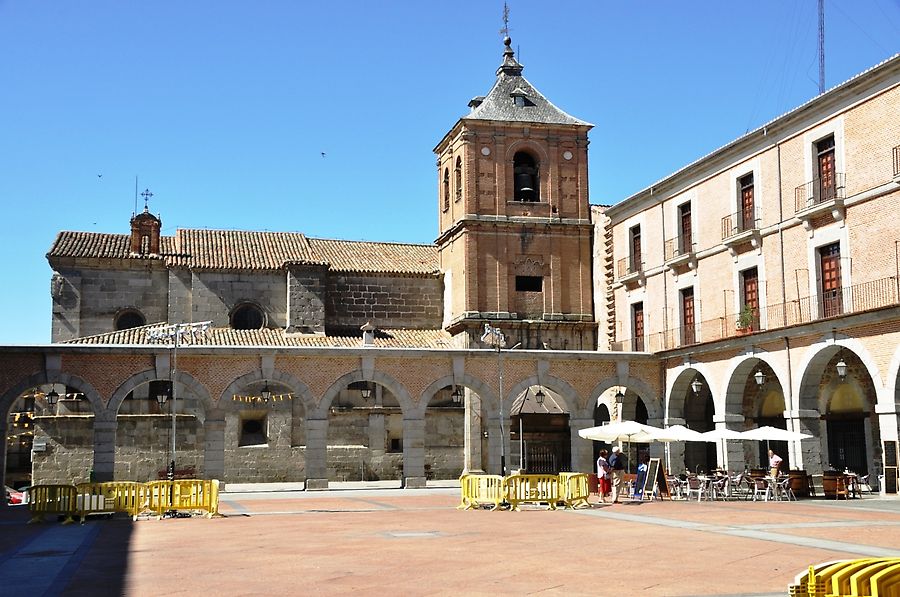 Innocent I (401 -417) Paschal (687)
Innocent I (401 -417) Paschal (687) 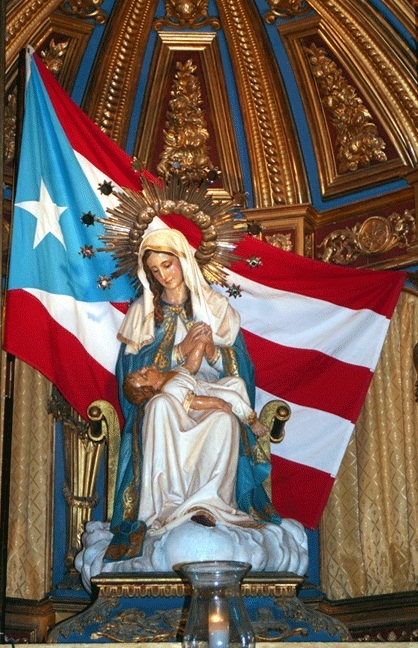 Paschal I (817 – 824) John XIX (1024 – 1032)
Paschal I (817 – 824) John XIX (1024 – 1032) Pius V (1566 – 1572)
Pius V (1566 – 1572) Pius X (1903 – 1914)
Pius X (1903 – 1914) Lives with parents at Rynok 2, kv.4.
Lives with parents at Rynok 2, kv.4. 12. His brother Edmund dies two years after graduating from medical
12. His brother Edmund dies two years after graduating from medical Tynetskaya 10).
Tynetskaya 10). During the war, despite the danger, he made friends
During the war, despite the danger, he made friends
 11. Ordination to the priesthood by Archbishop Sapekha in a personal hour
11. Ordination to the priesthood by Archbishop Sapekha in a personal hour John from
John from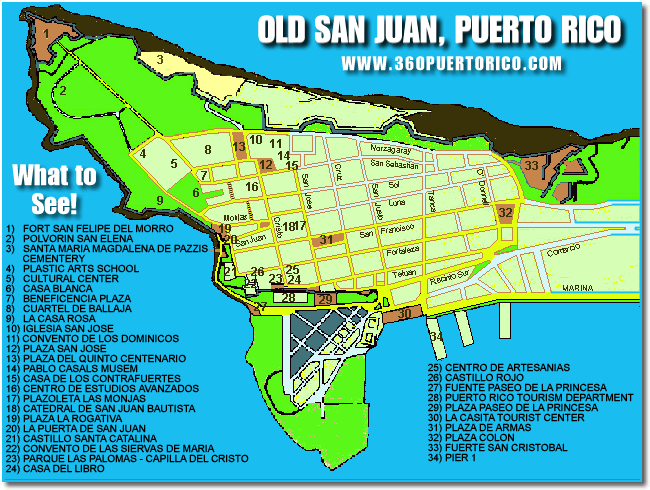 Follower of Sapekha, Archbishop Evgeniush
Follower of Sapekha, Archbishop Evgeniush